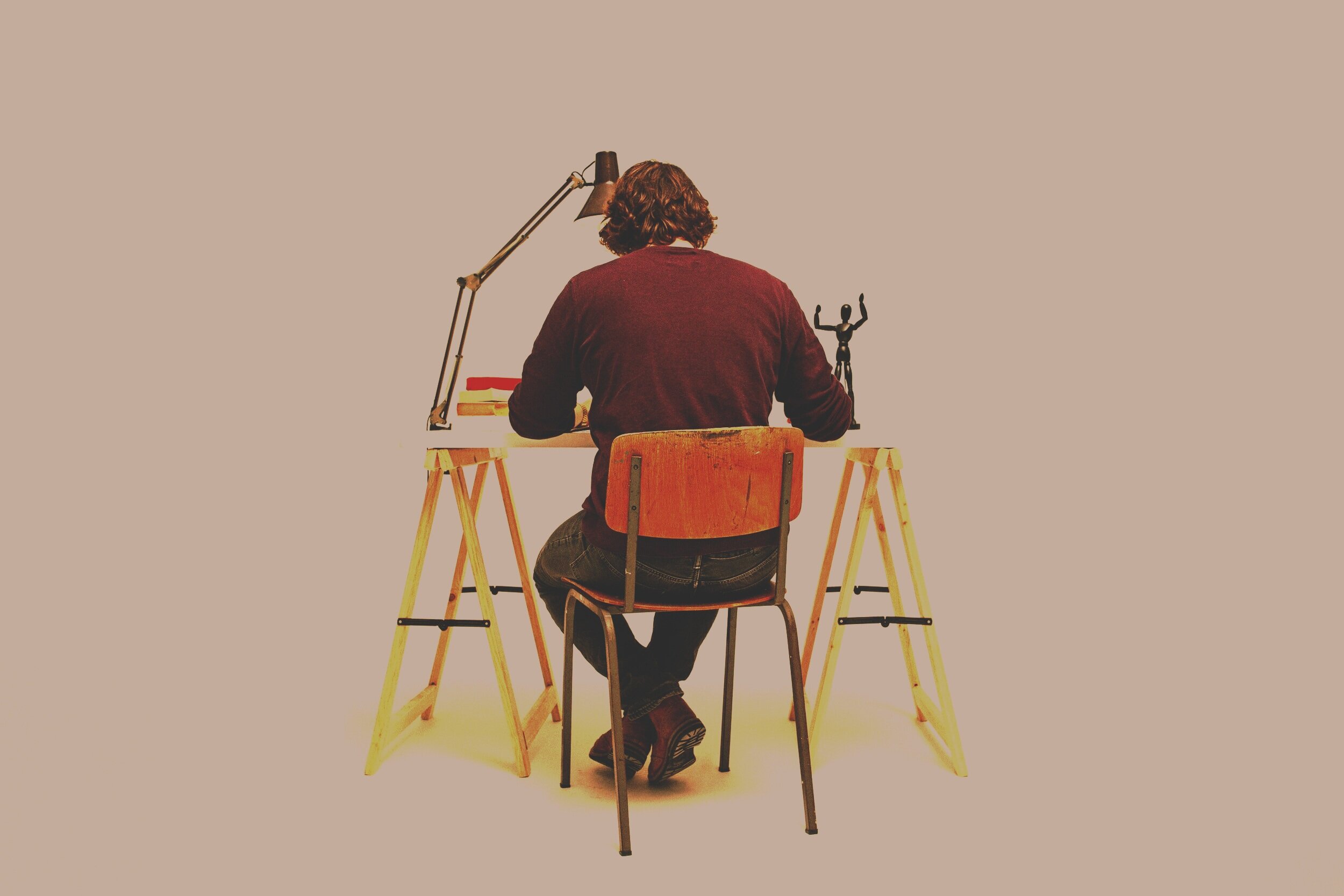Why Designers Make Prototypes
To a seasoned designer, prototypes are a natural and essential part of the product development process. Through prototypes, the designer’s ideas are made tangible, thereby facilitating discussion about the proposed solution and the validity of the problem it attempts to solve [1, 2]. Prototypes enable meaningful feedback from others, and allow for a deeper evaluation of functionality. Experienced designers know that all of these things are essential to their job of evolving the design to higher and higher states of desirability [3].
A 250 Word Primer on Prototypes
A prototype is a physical representation of an evolving design. Prototypes are often used to answer important questions about the design work. These questions range from, “how well will this solution work?” to “would someone like this enough to purchase it, and how much would they be willing to pay?” to “does this design actually solve the right problem?” When prototypes are built to answer meaningful questions, the design can evolve rapidly.
The need for prototyping is present early, late, and all throughout the product development process. Prototypes can be focused on just one part of a product, such as the tactile click of a button, or they can be comprehensive, representing a complete and complex system. Prototypes can be simple to construct such as a folded paper box with hand drawn buttons, or they can be complex to manufacture and to the casual observer appear indistinguishable from a finished, purchasable, product [3].
The degree to which a prototype reflects reality is termed prototype fidelity. High fidelity prototypes reflect reality very well, while low fidelity prototypes (such as the paper box mock up) are only rough approximations of reality. Managing the tradeoff between prototype fidelity and prototype construction speed/cost is important. The paper box can be made in minutes, and a dozen or more iterations can be made in an hour or two, while extremely high fidelity prototypes that reflect reality really well may take many months to design and manufacture. Good designers know how to choose an appropriate prototype fidelity so that important questions can be adequately answered, while spending the least resources to answer it.
Why Designers Make Prototypes
Having worked on dozens of commercial projects myself, and having taught/coached/mentored hundreds of other product development teams, I have come to believe that designers make various prototypes for 4 specific reasons. These 4 reasons are important to discuss here, because most novice designers are often unsure of why they are making a prototype, they just know that someone else asked them to make one. If you find yourself in this situation, consider the following reasons for prototyping, identify one or more that apply to your current design efforts, and then create the prototype to meet that purpose(s).
Four Reasons Designers Make Prototypes:
1. Designers make prototypes to encourage or demonstrate product development progress.
When a project begins, a schedule with milestones is typically established. Those milestones are almost always centered on demonstrating desirable prototype performance. Those prototype-centric milestones encourage development progress, and when achieved – even if only partially – prototypes demonstrate development progress. An honest demonstration of a prototype is the fastest way to communicate development progress to a group of technical and non-technical stakeholders. Many people have said, and it's often true, the proof is in the prototype.
If you are making a prototype to demonstrate progress, keep these in mind:
Progress is different from completion. As you plan a prototype to demonstrate progress, try to understand what progress you need to demonstrate. If you are thinking we just need to demonstrate as much progress as possible, you haven't thought deeply enough about what you’re trying to achieve with your prototype. In this case, you are likely prototyping for prototyping sake, which is a poor use of resources [3].
Because you are demonstrating progress, expect there to be room for improvement. Of all the improvements that could be made, seek to understand what improvements would be highly valued by those critiquing the work.
There is no point in faking this kind of prototype and pretending that more than actual progress has been made. This simply hides the truth from team members, bosses, clients, and other stakeholders whose insight you need to most effectively evolve the design.
The overall progress you need to demonstrate with a prototype, can be broken down into smaller mini-demonstrations of smaller progress, which you give to yourself or a colleague. These mini-demonstrations can often be achieved using very low fidelity prototypes that can be constructed very quickly. As such, organically creating many simple prototypes, leading to a more significant prototype you share with others is an efficient and effective path forward.
2. Designers make prototypes to check if a product (or part of a product) will function as planned.
Whether made by an experienced designer, or a novice, the first prototypes of a design rarely work as intended. The reason for this is simple; when we work in a theoretical world, as we do in our minds, or in our sketches, or even in the CAD system, many simplifying assumptions are made. When we make a physical prototype, we have to face those simplifications head-on. One of the great benefits of prototypes is that physical prototypes reveal the realities of the proposed solution [3]. Masses can no longer be point masses, friction can no longer be ignored, and clearances between parts now need to be considered. Prototypes made for this purpose are often used to identify what’s working and what’s not, so that plans for improvement can be made.
To be effective at using prototypes to check functionality, it is useful to understand what target function is required, plus what minimum and maximum function is allowable [3]. Then prepare the simplest prototype to adequately test the functionality. Be objective when testing. Avoid seeing only what you want to see. Look for weaknesses so that they can be the basis for improvement to the design. Also, it is important to remember that some functionality is coupled together (such as operating temperature and stiffness, for polymers) and should be tested together, while other required functionality is independent and can be tested alone (such as product color and product mass).
3. Designers make prototypes to validate the desirability of the design with people who will buy or use the design.
It is easy for design teams to believe they are designing a product that the market will love. Far too many teams, however, fail to check in with the market to get feedback during the development process, while there is still freedom to change the design. The easiest way to check in with the market is to show them a prototype and then let them talk about what they see, feel, and experience with the prototype [4]. When sharing a prototype made for this purpose, it is a good idea to simply hand the prototype to a prospective user/buyer and see what they do with it. Much can be revealed by observing their authentic reaction, their confusion, and their excitement. This authenticity is often lost when the designer spends the first few minutes of the interaction educating the user/buyer about the product.
Another important part of checking in with the market is to collect willingness-to-pay data. When asking a potential buyer how much they would be willing to pay for a particular solution, it is difficult for the buyer to give a realistic number without something tangible to look at, or touch. Prototypes used for market validation, therefore, greatly simplify acquiring that data.
4. Designers make prototypes to start conversations aimed at proving or disproving the assumptions made earlier in the product development process.
In order to begin work on a development project, many assumptions have to be made. These are often assumptions about problems and pain points people in the market experience. They are assumptions about how big those problems are, and how big the accompanying markets actually are [1]. There are often assumptions about what functional performance is wanted, what features users actually want, how much they’d be willing to pay, how they would trade competing functionality, how they prefer to find out about and purchase the product, and so on. Very quickly in the development process, early assumptions are proven or disproven and plans based on proven data unfold. Prototypes facilitate discussion about what the problem actually is, and if the proposed solution is effective or not. Prototypes also facilitate discussion about how the solution could be manufactured, packaged, distributed, marketed, and more.
When making prototypes for this purpose, it is essential for the designer to remain in discovery mode, constantly seeking new information about the problem and solution. When new information is discovered, it is important for the designer to look for patterns across multiple people so as to create a solution for the larger population. The designer must resist confirmation bias by remaining open to the reality that many assumptions will be disproven [5].
How to Use Prototypes Effectively
Some people have rightfully said that design is decision making. Making good decisions is difficult to do without using prototypes. Design decisions are often related to the key questions presented in [6]. These questions include:
Who uses the product, and how do they use it?
What is a good geometry for this part of the product?
What material should this part be made of?
How should the overall product be packaged?
What clearances between parts are needed for proper function?
and many more questions…
While some of these questions can be adequately answered by simply making a choice, many more of them are best answered with a prototype. Learning to do this well unlocks the power of prototyping and greatly accelerates successful product development. If you’re new to this, or would like some guidance, try these steps:
Make a large list of design decisions you need to make to more fully define the design. For example, we need to choose geometry and color for the product.
Add to that list key bits of information you need to discover to make the design more desirable. For example, we need to understand who the key users of this product are. Understanding who the key users are will likely dictate product size, aesthetics, cost, and more.
Prioritize the list that emerges from Steps 1 and 2 based on urgency and sequence. For example, it is more urgent to first understand who the key users are, because that information is needed to properly choose geometry and color for the product.
Starting at the top of the list, envision and plan for the least expensive (time and money) prototype that will adequately answer the question. Answer that question and move on to the next most urgent item in the list. If team resources allow it, independent items in the list can be worked on in parallel.
Occasionally, add new items to the list, and reprioritize to focus the team on the most essential work to be done.
To keep this efficient and effective, it is important to remember that the fastest-to-construct, least-expensive prototype, which is generally focused on just the part in question, is the one that should be made and tested. This way of working allows for dozens of iterations in a short amount of time [7].
While this may be easy to envision with paper boxes and hand drawn buttons, it is also commonly practiced at higher levels of prototype fidelity. Formlabs recently described a common 24-hour workflow this way: To iterate dozens of times, “design in CAD during the workday, then 3D print overnight. In the morning, clean, measure, test, create assemblies, and seek feedback on your design. Then tweak your design and repeat the process.” [8]
Concluding Remarks
Have you been asked to make a prototype, or feel like you should be doing more prototyping, but you’re not quite sure why, or not quite sure how to get the most out of prototyping? First try to understand why the prototype is needed. There are generally 4 reasons why seasoned designers make prototypes, which are:
To encourage or demonstrate product development progress
To check if a product (or part of a product) will function as planned.
To validate the desirability of the design with people who will buy or use the design.
To start conversations aimed at proving or disproving the assumptions made earlier in the product development process.
Once you have a better feel for why the prototype is needed, plan for (construct, test, etc) the specific prototype that will best meet its purpose for existing. Sometimes the best prototype for meeting the purpose will take just a few minutes to construct, and other times it will take weeks or months. Regardless of how much time and complexity are involved, using a series of adequate-fidelity prototypes is often the fastest way to evolve the design to higher and higher states of desirability.
References
[1] Mindful Marks, “Design Thinking: Prototype”, YouTube, https://youtu.be/Q4MzT2MEDHA, accessed 18 Jan 2023.
[2] Mattson, C., “Design Thinking Part 2: A Step-by-Step Process,” BYU Design Review, 2021, https://www.designreview.byu.edu/collections/design-thinking-part-2-design-thinking-as-a-step-by-step-process, accessed 17 Jan 2023.
[3] Mattson, C. A., and Sorensen, C. D., Product Development: Principles and Tools For Creating Desirable and Transferable Designs, 2020, Springer, Cham. Section 11.50.
[4] Furr, N., Nail it, then Scale it, The Entrepreneur's Guide to Creating and Managing Breakthrough Innovation, NISI Institute, 2011.
[5] Wikipedia, “Confirmation Bias,” https://en.wikipedia.org/wiki/Confirmation_bias, Accessed 18 Jan 2023.
[6] Mattson, C., “20 Questions of Product Development,” BYU Design Review, 2019, https://www.designreview.byu.edu/collections/20-questions-of-product-development, accessed 17 Jan 2023.
[7] Mattson, C., “Iteration: The Most Important Concept in Design,” BYU Design Review, 2020, https://www.designreview.byu.edu/collections/iteration-the-most-important-concept-in-design, accessed 17 Jan 2023.
[8] Formlabs, “What is rapid prototyping?” YouTube, https://youtu.be/-TDn25K-Jh4, accessed 18 Jan 2023.
To cite this article:
Mattson, Chris. “Why Designers Make Prototypes.” The BYU Design Review, 18 Jan. 2023, https://www.designreview.byu.edu/collections/why-designers-make-prototypes.





